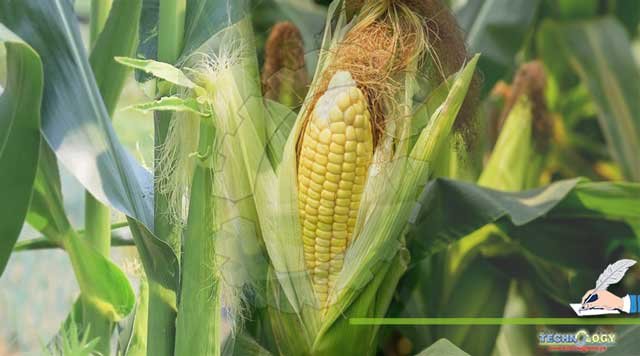The primary center of origin of maize is Central America and Mexico, where different types of maize are found. The discovery of fossil maize pollen is in Mexico that indicates maize is native of Mexico.

By Rafia Naveed, Dr. Abdul Ghani, Iqra Yasmeen
Maize is a New World Crop which was unknown in Europe. The word maize was originally Spanish and comes from the word “mahiz” in the Arawak language of Hatti. The settlers called it “Indian corn” which becomes just corn later on.
Cultivation of maize is throughout the world from 58°N latitude to 40°S latitude. Over 139 million ha of area covers this crop and around 600 million tons of maize is produced. Crop ranks third in cereal crops in area and production. USA, China, Brazil, Mexico, India, Romania, Philippines, Indonesia are some of important countries cultivate maize crop. Maize is the highest yielding cereal crop in the world because it has a significant importance for countries like Pakistan. An area of more than 118 million hectares with an annual production of about 600 million metric tons.
In Pakistan, after wheat, cotton and rice, maize is the fourth largest growing crop. The area under maize is over one million hectares and production is 3.5 million metric tons. Punjab contributes 39 per cent of the total area under maize and 30 per cent of total production; KPK contributes 56 per cent of the total area and 63 per cent of the production. While Sindh and Baluchistan contributes five percent of the total area and three percent of the total production.
Scientific Name: Zea mays
Common Name: Corn
Family: Poaceae
Maize has a variety of uses. Its grain is a rich source of starch 72%, vitamins A & B 3, 5%, proteins 10%, 4.8% oil, 5.8 % fiber, 3.0% sugar and 1.7% ash. One hundred gram of fresh grain contains 361 calories of energy, 9.4g protein; 4.3g fat, 74.4g carbohydrate, 1.8g fiber, 1.3g ash, 10.6 per cent water, 140mg vitamins, 9mg calcium, 290mg phosphorus and 2.5mg iron. It is a source of raw material for industry, where for the preparation of corn starch, corn oil, dextrose, corn syrup, corn flakes, cosmetics, wax, alcohol and tanning material for leather industry, it plays important role.
Ethanol obtained from maize is used as a biomass fuel. Stigmas from female corn flowers, known as corn silk is used as herbal supplements. Maize is used as forage. Animals use it as main source of calories. Mai is a valuable feed grain, because it is among the highest in net energy content and lowest in protein and fiber content. Animals like and eat it readily.
Maize is a warm weather plant and it grows from sea level to 3000 meters’ altitude. In many parts of the country, it grows throughout the year. Kharif (monsoon) season is the main growing season. However, maize may be sown any time from March to October, as climate is warm even in the winter season. Maize requires considerable moisture and warmth from germination to flowering. Because the most suitable temperature for germination is 21°C and for growth 32°C. Maize is very sensitive to stagnant water, particularly during its early stages of growth.
Maize crop grows in two seasons in Pakistan i.e. spring and autumn. Spring maize sowing time starts from first week of February to first week of March and for autumn maize sowing time from mid-May to August.
Medicinal Uses of Corn Silk
Corn silk is the long, thread-like strands of plant material that grow underneath the husk of a fresh ear of corn. These shiny, thin fibers aid the pollination and growth of corn, but traditional herbal medicine practices also use these fibers.
Corn silk contains a variety of plant compounds that may be responsible for various effects. In traditional Chinese and Native American medicine, corn silk was used as an herbal remedy. Many countries including China, France, Turkey, and the United States still uses it.
Antioxidants are plant compounds that protect your body’s cells against free radical damage and oxidative stress. Oxidative stress is one of the major causes of a number of chronic conditions, including diabetes, heart disease, cancer, and inflammation. But corn silk is a naturally rich source of flavonoid antioxidants.
Inflammation is part of your body’s natural immune system. However, variety of illnesses including heart disease and diabetes have link to excessive inflammation. Test-tube and animal studies have found that corn silk extract may reduce inflammation by suppressing the activity of two major inflammatory compounds.
Corn silk may be an effective treatment for high blood pressure.
First, it encourages the elimination of excess fluid from your body. As such, it is natural alternative to prescribed diuretics, which are often used to reduce blood pressure
Corn silk side effects and precautions
While there are very few adverse effects, corn silk may not be safe for everyone.
If you’ve experienced an allergic reaction to corn or corn products, you should avoid corn silk.
Furthermore, if you take any of the following medications you should avoid taking corn silk.
- diuretics
- blood pressure drugs
- diabetes medicine
- anti-inflammatory drugs
- blood thinners
If you’re taking potassium supplements, because corn silk may increase excretion of this mineral you should avoid this product.